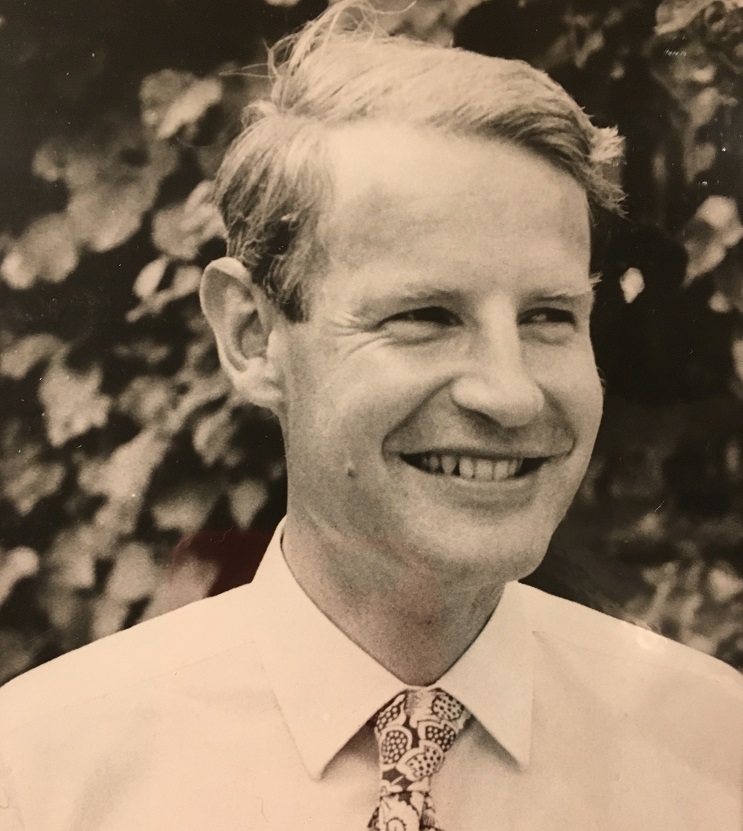The Haileybury Society is saddened to learn of the death last year of Dr Geoffrey – Patrick – Ridsdill Smith (A 51) who died on 18th November 2019, aged 81.
At Haileybury, Patrick was Head of School in 1956, played in the Hockey XI (1955-56.), the XV (1956) and the 2nd XI (also 1956) before moving up to Cambridge (Gonville & Caius College) where he was awarded National Science Tripos (1961) and his MA in 1965. Here, his son Dr William Ridsdill Smith (Th 86) tells us about his late father,
Haileybury memories
Geoffrey Patrick Ridsdill Smith, known as Patrick, was the youngest son of history beak Geoff “Horsey” Smith and head boy in 1956. He was born on St Patrick’s Day in his uncle’s house in Wellington Park, Belfast. His uncle, Sir Ian Fraser, a surgeon at the Royal Victoria Hospital, carried out the first field trials of penicillin with Howard Florey in North Africa.
Ian was a source of inspiration for Patrick; Ian’s son Mark Fraser (A 53) joined Patrick at Haileybury and writes:
“Arriving, as a “New Governor” at Haileybury at the beginning of the summer term in 1952, having previously attended a small preparatory school in Belfast, could have been a daunting prospect.
Cold baths and canings
A cold bath every morning was compulsory – hot ones occurred less frequently! Allenby was an “out-of-quad” House and therefore a bit of a law unto itself. It was immediately obvious that we new boys had few – if any – rights or privileges. One was expected to be respectful, even deferential, to the senior boys – even those who had started at Haileybury a mere two terms earlier.
Misdemeanours could be punished by a beating by a College Prefect (but not a House (Dormitory) Prefect) of your own House and canings by Masters took place – albeit infrequently. Should one happen to meet your Head of House in one of the narrow corridors of the rabbit warren that was Allenby you were expected to “stand back” and give way with alacrity – your heels crashing against the wainscotting and your body pressed hard against the wall – you might, or might not, receive a gracious acknowledgement!
For your first term, outside your DC (Dormitory Classroom), you were expected to keep all three buttons of your Harris Tweed jacket firmly “done up” but, for the next year – as an “older Governor” it was permitted that only one button should be kept fastened.
Sporting glories
From the first day of my arrival I was able to bask in the reflected glory of my Ridsdill-Smith cousins. Christopher (A 49), an outstanding sportsman and captain of both the First XV and the First Cricket XI was appointed Head of School at the beginning of my second term and his younger brother, Patrick, some eighteen months my senior, was already gaining renown on the sports field and as a musician.

(Above: Patrick and Taffy, the family’s rugby-playing corgi)
They were both extremely kind to me and, not infrequently, I was invited to their family home, Southfield, to be be entertained by Geoff and Mary (my mother’s younger sister). The family’s Welsh Corgi, Taffy, was a delight and indeed played an active role in the coaching of the Haileybury First XV! He could dribble a rugby ball – with his nose – most expertly and speedily and so was co-opted onto the coaching team. I remember a craggy – and to me rather fearsome – Colin Cobb shouting to the players……”Don’t kick it – keep it close like Taffy!”
The kindness of Horsey Smith
Geoff’s nickname was “Horsey” on account of his love for the animals. It was said that when he was offered the post of a Master at Haileybury he made his acceptance conditional on his being allowed to keep his horse in livery nearby and that he was permitted to “ride to hounds” as and when the opportunity arose.

(Above: the Ridsdall Smith family, as Marcus Fraser would remember them)
He was a most kind and gentle man who was admired and respected by all those who were lucky enough to have been taught by him. He appears to have related particularly well to the younger boys and to those who were, perhaps, not so academically able.
He devised methods of helping and encouraging the latter group. An example was his institution of the GLA system. A boy would be told that, by the following week, he was expected to be the Greatest Living Authority on a specific topic….anything from Albatrosses to Zebras. A feverish search through the Encyclopaedia Britannica ensued and subsequently a well-researched paper was delivered to his classmates.
Perhaps reflecting the trauma of his catastrophic aeroplane accident whilst training to be a pilot in the Royal Flying Corps as a result of which he sustained severe burns (especially to his face), Geoff instigated – for those of us with few or no martial inclinations – an alternative to the Combined Cadet Force in the shape of Community Service/Public Works.
Patrick’s all round abilities, talents and “people skills” made him the obvious choice as Headboy two years after his brother’s tenure – it was a role that he filled with aplomb and distinction. I remember him as a dashing and elusive threequarter in the first XV and an elegant and cavalier batsman playing for the College First XI………..”
Up to Cambridge and life after Haileybury
After Haileybury Patrick joined the Royal Navy. He was posted to Hong Kong, where he met his wife, Diana, daughter of the Solicitor General, Arthur Hooton. In 1958 he followed his brothers Marcus and Christopher to Gonville and Caius College, Cambridge, to read botany, zoology and economics. Anthony Oliver, a future governor of Haileybury, writes:
“That year about half the freshmen had, like Patrick, completed national service. Their maturity gave them the wisdom to balance work, sport and social activities, which Patrick did with consummate skill. His contemporaries remember him as a most popular member of the College and friendships made then have lasted ever since. He was joint organiser for the Caius activities for Poppy Day in1963. In those days, undergraduates took over the city centre and colleges competed to extort as much as possible from the community in aid of the Earl Haig Fund, often by marginally legal means. Patrick’s ingenuity, and ability to motivate support from others, produced such pranks as the building of a Scaffold Bridge across Trinity Street from which was suspended a semi-willing undergraduate dressed as an angel who collected from the passengers on the top deck of busses stopped by another undergraduate dressed as a policeman”
Patrick had a passion for adventure especially afloat. He sailed a 16-foot catamaran dinghy. On one occasion he was dismasted midway to Alderney. He was rescued by a tramp steamer and not put ashore until he reached Genoa, Italy.

He first worked as an economist for Fison’s PLC. In 1971 he realised his true vocation was medicine and went back to Cambridge, with a young family in tow. He kept his commission in the Royal Navy Reserve. He relished the special training weekends for the Intelligence Section which often involved night exercises in rubber dinghies. He took the family on long sailing trips and his wife on the Fastnet race.
He went on to have 25 years as a GP in Burwell outside Cambridge. He was known for his kindness, gentleness, ability to listen and time he spent with patients.
In retirement, he restored an old barn in the Lot, France and remained an active member in village and church life in Swaffham Bulbeck. He developed dementia in his early 70s but was still able to enjoy butterflies, birdsong, and singing. He is survived by his wife Diana, his children Mark (Th 78), Camilla and William (Th 81), 9 grandchildren, and his two older brothers Marcus (A 45) and Christopher (A 49) and his younger sister Filly.
More from The Haileybury Society
- Never In Our Comfort Zone – Challenge Complete
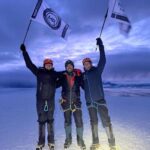
- Weekly Watercolour Classes with John Hill (K 63)
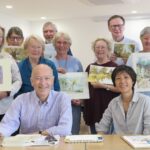
- Oscar Lock (BF 13)
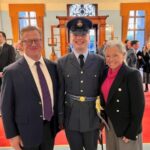
- Haileybury Connections In Uganda
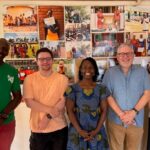
- Now Published – The Haileybury Society Annual Report 2025
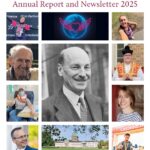
- Haileybury Rackets – A Proud Sporting Heritage
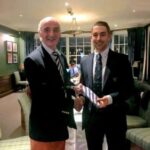
Unless otherwise stated, all content and images on this website and blog © The Haileybury Society, 2024, all rights reserved
Search stories by date
| M | T | W | T | F | S | S |
|---|---|---|---|---|---|---|
| 1 | 2 | 3 | 4 | |||
| 5 | 6 | 7 | 8 | 9 | 10 | 11 |
| 12 | 13 | 14 | 15 | 16 | 17 | 18 |
| 19 | 20 | 21 | 22 | 23 | 24 | 25 |
| 26 | 27 | 28 | 29 | 30 | 31 | |
Unless otherwise stated, all content and images on this website and blog © The Haileybury Society, 2024, all rights reserved
